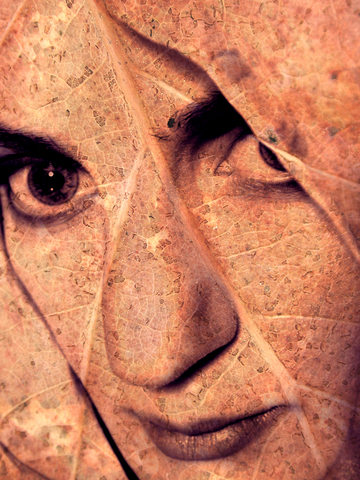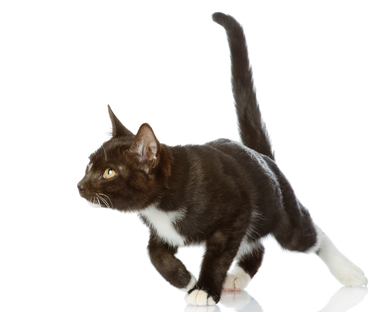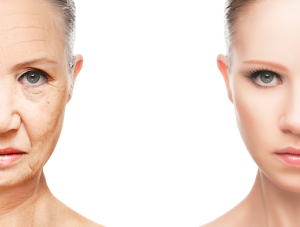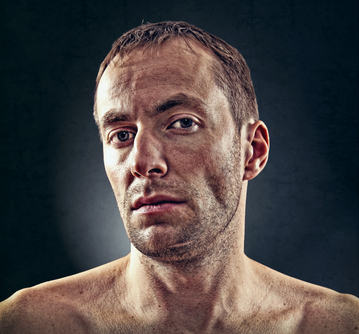Got your skin(care) in the game of life?
Aging skin. It’s worth an occasional sigh, right? After all, at the end of the day, unless you are spending major dollars on a few nips and a few tucks and some filler and peels, well, you have to give into it.
Or do you?
The American Academy of Dermatology has issued a few wonderful tips on taking care of your skin in your 40s and 50s. I thought that I would devote today’s post to things you can do to promote good skin care:
- Protect your skin from the sun. Oh, my goodness; this should be a given at any age. With the surge in products to provide a healthy glow, there is absolutely no reason not to wear sunscreen and every reason to wear sunscreen. And as the AAD points out, protection against the sun is the formation of any skincare plan. The strategy is simple: try to avoid direct sunlight between the hours of 10 am and 2 pm, especially if your shadow looks shorter than you. Wear hats and definitely wear shades. And of course, wear a sunscreen product for the broadest protection possible. Personally, I use EltaMD UV Daily Broad Spectrum during the daytime, which my dermatologist specifically recommended for my skin type.
- Apply moisturizer daily. Oil production in the skin starts to decline around age 40 so moisturizing becomes ever more important thereafter. Many physicians say that the best time to moisturize is right after a shower or bath. Your choice of a moisturizing cream depends on your skin type, your problem areas and your individual make up. I have a mild form of rosacea and consequently, can’t use a lot of products without breaking out. Speak to a dermatologist if you have any questions about what you should use. And be mindful that your product choice may change over time.
- Wash away dirt and grime only twice a day. Did you know that your face washing habits actually affect your appearance? That’s why it’s best to wash with warm (not hot) water and use a mild cleanser in lieu of soap, which can be too harsh as skin begins to thin and lose elasticity. You should also avoid scrubbing too hard, especially if you are acne-prone. Many women experience acne during perimenopause and use and overuse of antiacne cleansers can be irritating. Rather, look for products that are non-comedogenic, nonacnegenic or oil-free.
- Stop smoking. I can’t emphasize this enough. Studies have suggested that tobacco smoke can lead to smoker’s face due to its effect on mast cells (cells that play an important role in fighting allergies and inflammation). Think of the Marlboro Man – rugged looks, i.e. dull and dry complexion, loss of skin firmness, premature lines and wrinkles may look sexy on a 30 year old but by the time you reach your 40s or 50s? Forgeddaboutit!
- Get enough sleep. Oy! This one is tough, especially during menopause. But sleep deprivation can affect the ability of the body (and the skin) to renew itself. Beauty rest? Indeed!
- Finally eat healthy foods and drink plenty of water. The AAD says that a healthy diet filled with fruits, vegs, lean proteins and healthy fats is an important key to healthy skin. And, data suggest that diet can affect multiple skin conditions other than aging, including acne, psoriasis and dermatitis.
Guyside: Your Skin
Bob is out today so I’m taking over Guyside this week. And what better than continue the topic that I started on Monday about skincare. Only this time, it’s the guys that I am most worried about. Did you know that not only has the bulk of research conducted on UV exposure and sun protection been conducted in women, but the few that have looked at men have discovered a rather troubling fact:
Guys are far less concerned about visible aging than women, in part due to different cultural pressures to retain a youthful look. But more importantly, when they skip the sunscreen, they do so because they actually like the effects of UV exposure on their skin. And, I am not referring to the glow of a tan but the ‘ruggedness’ of weathered skin.
When you go for rugged and weathered you may also be signing up for non-melanoma skin cancer (aka squamous cell), which men develop significantly more often than women. The reasons go beyond the lack of use of skin protection and cultural mores; laboratory studies in mice suggest that there are gender differences in how male and female skin reacts to UV light, and theoretically, men may produce less catalase, an enzyme that protects cells from damage.
It’s only squamous cell, right?! Well, hold on, because while it is not usually malignant, it can spread and cause serious complications when it gets into the lymph nodes. In some men, it’s a downright death sentence.
Getting back to the issue at hand: what does it take to get men to pay attention?
I’m not a man so I can only speak for the research. And in the scant research that has been conducted on this topic in men, the answer is pretty simple:
shock and awe.
In fact, when researchers gathered a small group of men between the ages of 18 and 34 and exposed them to a computer program that demonstrated their personal aging process based on UV and non-UV exposure, the guys who were immediately shocked by what they saw were the ones who indicated that the experience would affect their current use of sun protection agents and sun exposure behaviors. And among the ten guys who didn’t care? They tended to raise the positives about the way they appeared in the images.
“I think that I look quite tough…experienced…and weathered.” One man noted that he would have to be persuaded about the risk to his health.
It appears that on average, men engage in riskier sun exposure behaviors than women. Slapping on sunscreen is seen as feminine and some men are simply unfazed by facial aging, noting that wrinkles add character and rugged good looks.
But here’s the rub: after the rugged good looks phase come issues that are difficult to deal with. My dad, for example, grew up on a beach in the 30s and 40s. He’s spent his life having patches of skin removed and once handsome, he is simply an example of skin gone wrong.
Bottom line: sunscreen – wear it. And rugged good looks? All I can say is that some of you may remember the Marlboro Man. Four of these men died as a result of their behavior, in this case, smoking. But more importantly, statistics show that more than half of men don’t use sunscreen and about 71% don’t know squat about cancer warning signs.
Rugged good looks fade. Skin cancer doesn’t.
Read MoreGot skin in the game of life? You best take care of it!
 When it comes to health, many of us neglect our skin. But think about it: its protection allows us to function and when it is well cared for and it allows our inner beauty to shine through. And yet, few of us think beyond the obvious appearance issues to the fact that the effects of aging on skin can lead to certain dermatological conditions that cause illness and even death. Researchers say that in the U.S., a majority of people over the age of 65 have at least one skin disorder; in the UK, 70% of older people experience skin conditions, many of which are preventable.
When it comes to health, many of us neglect our skin. But think about it: its protection allows us to function and when it is well cared for and it allows our inner beauty to shine through. And yet, few of us think beyond the obvious appearance issues to the fact that the effects of aging on skin can lead to certain dermatological conditions that cause illness and even death. Researchers say that in the U.S., a majority of people over the age of 65 have at least one skin disorder; in the UK, 70% of older people experience skin conditions, many of which are preventable.
Guess what? I’m not simply talking skin cancer. Rather, I’m referring to dry skin, inflammatory eczema on the lower extremities, pressure ulcers (when an area of the skin breaks down due to pressure placed on it) tears, wounds itching and an increased bacterial and fungal infections.
The environment: Some of the challenges that we face are directly related to the environment. Factors like air pollution, smoking and of course, regular exposure to UV radiation can lead to deep wrinkles, age spots, and leathery appearance. The message is simple, if not obvious: don’t smoke, wear sunscreen and try to minimize regular exposure to smog infested cities (of course, the latter cannot always be avoided).
Physical factors: A condition known as xerosis cutis i.e. abnormally dry skin, occurs in up to 85% of older adults. It is related to a decline in skin fats and reduced secretion of sebum — the oily, waxy matter that is secreted to keep the skin lubricated and waterproofed. When the skin is abnormally dry, it can increase the inclination to itch and scratch, with in turn, may breakdown the skin and cause wounds and infections. Although there is little that can be done to avoid some of the natural processes of aging, it’s critical to avoid overwashing with soaps and detergents, both of which can remove grease from the skin and lead to scaling and itching. Importantly, air condition and heating. which dry out the air, can exacerbate dry skin and while humidity is uncomfortable, it’s critical. During winter, hydrate the air by running a humidifier. Regular use of emollient-rich creams and moisturizers, like Aveeno or Roc or Nivea can also ward off the time effects of dry skin. Be sure to read the label of popular moisturizers to insure that they contain humectants, which help draw water to the skin.
Another important consideration is the physical integrity of the skin and the way that the skin remodels itself as we age, increasing the predisposition to tears, wounds and pressure ulcers. Unfortunately, science has not caught up with the natural aging process and there isn’t a lot of strong evidence to support one strategy over another. There is indication, however, that knowing your risk before being exposed to situations that might cause pressure ulcers (e.g. bed rest) can help to insure that you take steps before they happen. Avoid rigorous scrubbing of the skin, especially over the bonier areas, as this can increase the risk of later problems. Treat stress incontinence or overactive bladder now, before it regularly exposes the skin to moisture that again, can cause problems down the line. And that eight glasses of water rule? It my actually help your skin in the long run – hydration is key! Avoid too much caffeine and insure that you are eating fruits and veggies with high water contents, like melon, tomatoes and lettuce.
An additional solution may be the use of 0.4% topical retinoids. Research has shown that retinoids can make skin look ‘more youthful, ‘ and may even increase the ability of polysaccharides to retain water in the outer skin layer and promote the production of collagen, which keeps the skin elastic. Additionally, some studies have shown that prolonged use of topical retinoids may improve the skin’s matrix, making it less susceptible to injury and pressure ulcers.
The bottom line is that our skin deserves a lot more attention than we give it and engaging in protective strategies now may result in a payoff later in life. Basic skincare is essential. There is no panacea but taking the appropriate steps will keep your skin the game of life longer.
Read More
Aging & the double standard
 Yesterday, a Facebook colleague posted a link to a Huff Post article that left me floored. Entitled “My Naked Truth,” writer Robin Korth discusses a recent relationship in which the man she was seeing, just 4 years shy of her 59 years, told her that he could not deal with her ‘wrinkly body’ and requested that she ‘hide’ in order to continue a sexual relationship. When she informed him that she no longer want to see him, he was both stunned and confused.
Yesterday, a Facebook colleague posted a link to a Huff Post article that left me floored. Entitled “My Naked Truth,” writer Robin Korth discusses a recent relationship in which the man she was seeing, just 4 years shy of her 59 years, told her that he could not deal with her ‘wrinkly body’ and requested that she ‘hide’ in order to continue a sexual relationship. When she informed him that she no longer want to see him, he was both stunned and confused.
I would like to say that I have no words but it’s simply untrue. I have many words, most of which are unprintable. However, the piece provided the courage for me to openly share my recent experience on a dating site. I’ve been mired in work for the past half decade and have been running from the disappointment and hurt from my last relationship; in other words, I’ve not been seeing anyone nor have I had any interest in putting myself back out in the game. But this Spring brought a shift in priorities and in my life and with an open heart and halfway open mind, I decided that the time was now to have fun with a new man.
I have male friends in my life who constantly tell me that I am pretty; some go as far to claim that I am ‘hot,’ or ‘sexy.’ Those compliments are truly lovely. And yet, my foray into the world of online dating only brought to fore everything that is wrong with the way that many men my age consider women and how they consider themselves in relation to the partners they go after. For the most part — like Dave in Robin Korth’s piece — the men that I encountered seem to have blinders on. Mind you, I know a lot of men who are as self-deprecating about their aging looks as women are, but for every single one of these guys, I also know at least two who are clueless. The latter go after women half their age or at the very least, 10 years younger. And while I can certainly understand the attraction of supple skin, perky breasts and flawless, cellulite-free derrieres, I can also see what apparently they don’t see in themselves: sagging guts and receding hairlines. In my recent ‘dating’ foray, I was contacted by countless men who ignored what I wrote that I was seeking, men a good 10 years or more older than me, inactive men, men who, based on their notes, were short a few neurons in the intellect department. I received emails saying little more than how much my hair and eyes were appreciated. For all intents and purposes, I was rewarded with superficial, icing but no cake, whipped cream and nothing more. Needless to say, I promptly took down the profile.
When does the double-standard start and end? We live in a country where there are weekly reports of high school or college athletes raping women, where insurance companies pay for men with erectile issues to get their hard(s)-on, where a women turns 50 and becomes invisible and where men of the very same age, men with big guts and lousy postures who get winded walking up a few stairs somehow become more attractive — at least to the few who, in the majority of cases, are only interested in their money and cache. Or, as Korth writes, men can’t deal with our bodies unless we are in the dark draped in protective gear that sucks in our flaws and also our souls in the process.
So, floored? Yes, and angry and absolutely puzzled how this happens and why many women continue to lead their lives counting wrinkles and flaws and opportunities that have dried up. And I am heartened by women like Korth who are willing to share their stories and still claim their bodies for what they are: wrinkled but beautiful, flawed but strong, every “imperfection a badge of living and giving of life.”
Here’s the rub, my rub: I liked the way I looked a lot better six years ago and was hardly as self critical as I am now. And, at the age of 53, I find lots of flaws; this despite working out daily and engaging in other physical activity. Time to end the double-standard. I think I’ll start right now. What about you?
Read More
Skinning the cholesterol cat
 It’s difficult to pin down the reasons underlying an increasing risk for heart disease as women age. Menopause in particular is associated with a rapid increase in blood LDL cholesterol and triglycerides levels and declines in HDL cholesterol levels. And, while some researchers claim that hormones are at-play, others suggest that it is increased risk is associated with a gradual decline of cells that act to repair and replenish circulation. Regardless, it is well accepted that high levels of LDL can increase the risk of atherosclerosis and that even early signs of high cholesterol levels should raise a few red flags in the health department.
It’s difficult to pin down the reasons underlying an increasing risk for heart disease as women age. Menopause in particular is associated with a rapid increase in blood LDL cholesterol and triglycerides levels and declines in HDL cholesterol levels. And, while some researchers claim that hormones are at-play, others suggest that it is increased risk is associated with a gradual decline of cells that act to repair and replenish circulation. Regardless, it is well accepted that high levels of LDL can increase the risk of atherosclerosis and that even early signs of high cholesterol levels should raise a few red flags in the health department.
Most recently, the American Heart Association and American College of Cardiology issued controversial recommendations that statins should be used in anyone who has a greater than 7.5% chance of having a heart attack or stroke or developing heart disease over the following 10 year period. However, lifestyle modification, i.e. adopting a healthy diet, engaging in regular physical activity, controlling diabetes and high blood pressure and weight loss may be an effective answer in some people. For others, there is new evidence suggesting that the Chinese herbs Danshen (Salvia miltiorrhiza) and Gegen (Radix pueraidae), aka D&G, may help to lower LDL, improve the functioning of the lining of the heart and lower carotid intima thickness (the thickness of the two innermost walls of the artery). These two herb roots are more commonly known as red sage and kudzu, respectfully, and previously clinical trials have demonstrated their potential for control of heart pain and other cardiac symptoms.
Traditional Chinese Medicine is often disputed in allopathic medicine and many practitioners believe that its role in disease is unproven. Nevertheless, the 12-month, randomized controlled study among 165 postmenopausal women who took either daily D&G or placebo may put some of these challenges to rest. All of the study participants had what is considered borderline high cholesterol at the study’s start. And, while D&G had no discernible impact on blood pressure, women taking D&G experienced significant declines in carotid intima-media thickness compared to women taking placebo. This benefit appeared to be even greater after more than six months of treatment.
Additionally, the researchers reported a ‘remarkable’ decline in both LDL and total cholesterol levels compared to placebo (6.9% versus 3.2% LDL, 5.8% versus 3.4%, total cholesterol) even though these figures did not reach statistical significance. They also found that when they evaluated quality of life, a significant decline in mental health scores was observed in the placebo group while a significant increase in general health scores was observed among women taking D&G.
Almost as important, no significant side effects were reported.
The researchers say that they cannot identify the reasons underlying these benefits and that molecular studies are needed to explain the biology underlying the improvements. However, it is clear from this small study that there a different ways to skin the cat called high cholesterol and that statins aren’t the only game in town.
Stay tuned!
Read More







